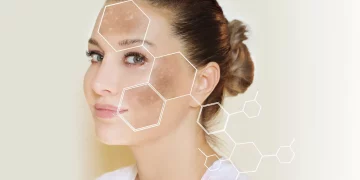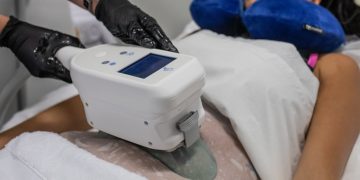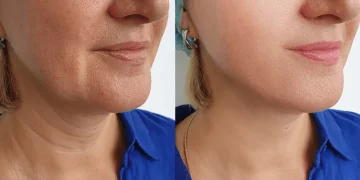Laser freckle removal is a popular cosmetic procedure designed to reduce or eliminate unwanted pigmentation such as freckles, sunspots, age spots, and other forms of hyperpigmentation. By using focused light energy, laser treatment targets pigmented cells in the skin, breaking down excess melanin to reveal a clearer and more even complexion.
This article explains the scientific principle behind laser freckle removal, the types of lasers commonly used, and which skin types and conditions are most suitable for this treatment.
1. The Principle Behind Laser Freckle Removal
The core mechanism of laser freckle removal is called selective photothermolysis. It involves delivering precise wavelengths of laser light that are absorbed specifically by melanin — the pigment responsible for freckles and dark spots — without damaging the surrounding skin.
How It Works:
- The laser emits light at a wavelength optimized to target melanin granules
- Melanin absorbs this light and converts it into heat energy
- The localized heat destroys or fragments the pigment cells into smaller particles
- The body’s immune system then gradually removes these fragments over days to weeks
- This process reduces the appearance of pigmentation and evens skin tone
2. Types of Lasers Used for Freckle Removal
Different lasers are employed depending on the pigmentation depth and skin type, including:
- Q-Switched Nd:YAG Laser: Emits short, high-energy pulses that effectively target superficial and deeper pigmentation with minimal skin damage. Suitable for darker skin tones.
- Fractional Laser (e.g., Fraxel): Creates micro-injuries to stimulate skin renewal and treat pigmentation simultaneously. Also promotes collagen production.
- Alexandrite Laser: Works well for lighter skin types with pigmented lesions, offering precise melanin targeting.
- Intense Pulsed Light (IPL): Not a laser but a broad-spectrum light that targets pigment irregularities; often used for mild pigmentation.

3. Suitable Skin Types and Considerations
Ideal Candidates:
- Individuals with light to medium skin tones (Fitzpatrick skin types I to III) often respond best due to lower risk of post-inflammatory pigmentation.
- Those with localized pigmentation such as freckles, sunspots, lentigines, or melasma patches.
- People seeking a non-invasive treatment with minimal downtime.
Caution for:
- Darker skin tones (types IV to VI): Higher risk of hypopigmentation (light spots) or hyperpigmentation (dark spots) after treatment. Requires lasers like Nd:YAG that are safer for melanin-rich skin and must be performed by experienced professionals.
- Active skin infections or inflammatory skin conditions: Laser treatment may worsen these.
- Recent sun exposure: Tanned skin increases risks of adverse effects and should be avoided before treatment.
4. Benefits and Risks
Benefits:
- Precise targeting of pigment without surgery
- Minimal damage to surrounding tissue
- Relatively quick procedure with few sessions required
- Can improve overall skin texture and tone
Risks:
- Temporary redness, swelling, or mild discomfort
- Rarely, blistering or scarring
- Risk of pigment changes, especially in darker skin or if post-care is inadequate
- Multiple sessions may be needed for optimal results
5. Post-Treatment Care
Proper aftercare is critical to ensure healing and prevent complications:
- Avoid direct sun exposure and use high-SPF sunscreen daily
- Keep the treated area clean and moisturized
- Avoid picking at scabs or peeling skin
- Follow the dermatologist’s advice regarding skincare products and activity restrictions
Conclusion
Laser freckle removal works by selectively targeting melanin pigment with precise light energy, breaking down pigmented cells to reveal clearer skin. It is most suitable for individuals with light to medium skin tones and localized pigmentation issues. While generally safe and effective, proper selection, technique, and aftercare are essential to minimize risks and achieve the best results.
Consultation with a qualified dermatologist or laser specialist is necessary to determine the most appropriate laser type and treatment plan tailored to your skin type and concerns.












































